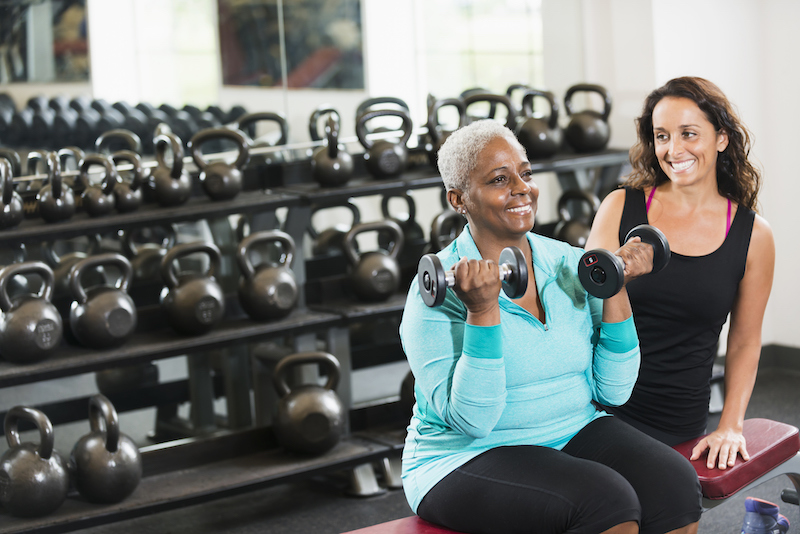Weightlifting can be intimidating even for the most active among us. Maybe it’s terms like “dead lifting” or the general confusion that comes along with figuring out the weight machines at the gym. Whatever the reason, only 17 percent of older Americans lift weights.
But here’s the thing: lifting weights is important for healthy aging.
Benefits of lifting weights for older adults
There are many reasons to exercise, from preventing midlife weight gain to putting the kibosh on stress, but weightlifting in particular has some surprising anti-aging benefits.
As we age, the cells in our muscles do not regenerate as easily as they once did and they sustain more damage as result. One study showed that sedentary older adults who took up weight training were able to reverse the decline of cellular health in their muscles. So you don’t need years of weightlifting experience to reap its benefits.
Of course, lifting weights has a plethora of pluses. It helps you build muscle mass to preserve bone density and reduces the risk of osteoporosis, heart disease, arthritis, and type 2 diabetes. Like other forms of exercise, weight training can improve your mood and promote better sleep. It boosts your metabolism and can help build confidence.
Get started
It’s never too late to start weight training. Because we lose 5 percent of muscle each decade starting in our 30s (more after 65), it’s even more important to weight train as we age. If you want to get started with weightlifting but you don’t own weights or have access to a gym, no sweat. Your own body is all you need.
Nerd Fitness recommends the following beginner bodyweight workout:
20 squats
10 pushups
20 walking lunges
10 dumbbell rows (use gallon jugs filled with water)
1 15-second plank
30 jumping jacks
Repeat 3 times
The National Strength Training and Conditioning Association recommends weight training two to three times a week for older adults. If you’re mostly sedentary and you’re looking to pursue another activity, weight training can set you up for success.
Avoid injuries
To avoid injuries, it’s important to strengthen the large muscle groups in your legs, arms, and core, especially if you plan on adding aerobic exercise to your workout regimen. Though some discomfort and soreness can be expected after weight training, particularly in the beginning, sharp pain or pain in your joints or nerves is not normal and a sign that you should stop. If pain persists after resting, see your doctor.
If you have old injuries that still bother you or other concerns about weightlifting, consider seeing a physical therapist first to help you improve your mobility and avoid hurting yourself.
It’s a good idea to talk to your doctor before starting a new workout regimen. To learn more about the benefits of exercise over 40, read If You Do Just One Thing, Get Up and Move.
Photo: Kali9
